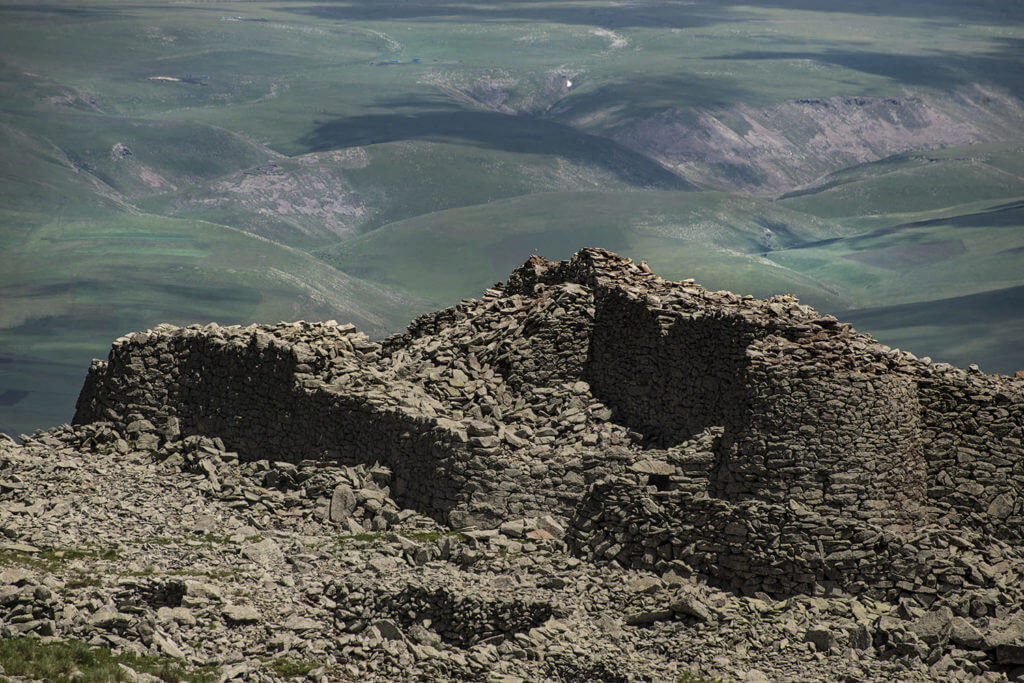

სამცხე-ჯავახეთის უძველესი,...
Publicado: 21 Apr 2023
The landscape of Georgia is filled with fierce mountains, wide plateaus, and incredibly scenic valleys. Perhaps the most impressive feature of Georgian geography is the vast remains of Megalithic structures dotted around the Georgian countryside. A ‘Megalith’ comes from the Greek words ‘great’ and ‘stone’. Megaliths are single massive stones or monuments to prehistoric civilization.
Megaliths exist all over the world in many countries and give us an insight into how our ancestors lived and what their culture might have looked like. The Georgian region of Samtskhe-Javakheti in particular has an abundance of megalithic structures along with some of the most well-preserved specimens of any area, more information can be found about them here: the megalithic heritage of samtskhe-javakheti; These structures were constructed anywhere between 10,000 and 1,200 BC.
The megalith remnants are remains of both everyday houses and religious structures. Historians and archaeologists believe these religious structures were associated with mystical beliefs helping a society bring rain, clemency for harvests, grain fertility, or increasing milk production for mothers. While we may never know a structure’s exact purpose visiting these remains can give us a glimpse into prehistoric life and allow us to reflect on how our ancestors lived.
The most notable of the megalith structures are thought to be those of the megalithic fortresses. Built on hilltops these fortresses provided our ancestors with a defensible home and a large community living space. The three greatest of these fortresses are named, Abuli, Saro, and Shaori.
The fortress of Abuli is located on the southern slope of the lesser Abuli mountain. This fortress was constructed in the Bronze Age and is one of the most mysterious megalithic structures in Samtskhe-Javakheti. Its exterior is shaped in the form of a ring, there are a tower and living quarters that can be distinguished once inside the fort. The high altitude of the fortress provides scenic views of Paravani Lake as well as some far-away villages.
The Saro megalithic fortress is a complex that incorporates three fortresses. The complex is divided into the lower fortress, upper fortress, and new fortress. Although the exact date of residence is unknown, archaeological excavation shows that people lived in this area up to the mid-feudal era. This indicates that despite its ancient construction it was a useful structure for people hundreds of years later. Close to these fortresses are the Church of the Archangels and the traditional Meskhetian halls, which are dwellings spread throughout the entire eastern part of Georgia.
The final major megalithic fortress is named Shaori. Its home is in the Lesser Caucasus mountains, northwest of Paravani Lake. The fortress is inscribed on the list of the Immovable Cultural Monuments of National Significance of Georgia. The location and spatial organization of Shaori make it an unlikely domestic center, rather, it was most likely used for religious purposes.
There are notable megalithic structures all over the world, in countries like Turkey, India, and the British Isles. The most famous of all is Stonehenge in the United Kingdom. What sets megalithic structures in Samtskhe-Javakheti apart is their concentration in such a small region. In addition, Georgia does not have such a large tourism market, so these structures are not visited as often, and tourists have much more space and time to explore these ruins.
Another draw to the megaliths located in Samtskhe-Javakheti is their proximity to untouched nature. The region of Samtskhe-Javakheti is covered in mountains and lakes which do not have large urban centers around them. This allows visitors to place themselves back in time and get a clearer idea of how our ancient ancestors used to live when the world was a less explored and mysterious place.
Once you have made the decision to go to Samtskhe-Javakheti and explore our ancient past, tour operators can be contacted to show you around the megalithic structures and explain more about them. Or if you wish to take on your own adventure solo, cars are available to rent, and you can drive to these heritage sites on your own time.
Author: Eliot Heiss